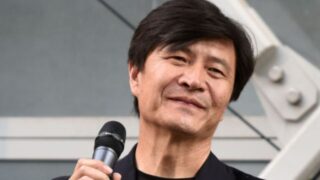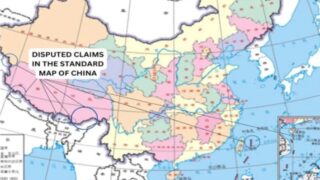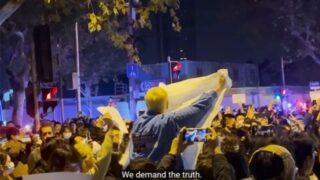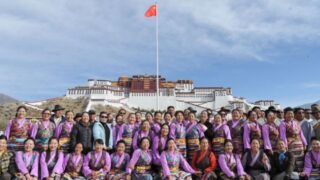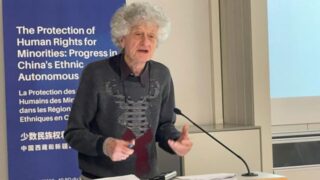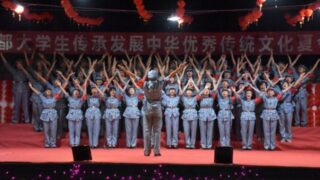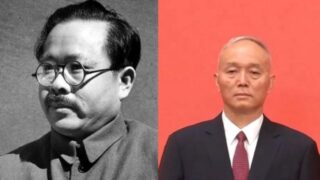The famous Brick Lane portraits of Mr. Bean and Tina Turner were replaced at night with Chinese Communist Party slogans.
by Ruth Ingram


London’s famed Brick Lane bade farewell to portraits of comedian Mr. Bean and singer Tina Turner last weekend, and said hello instead to “civilization, harmony, freedom, equality, justice” and everything else that the CCP espouses in the name of its core values.
No one will probably ever discover why Royal College of Art overseas Chinese student Wang Hanzheng (known as “Yique” on his Instagram feed), perhaps helped by friends, decided to whitewash an entire swathe of one of London’s graffiti hot spots and replace portraits of two national treasures and a memorial to the late graffiti artist Myartis Frank with 24 red Chinese characters; whose significance, it has to be said, would have been lost on most Londoners.
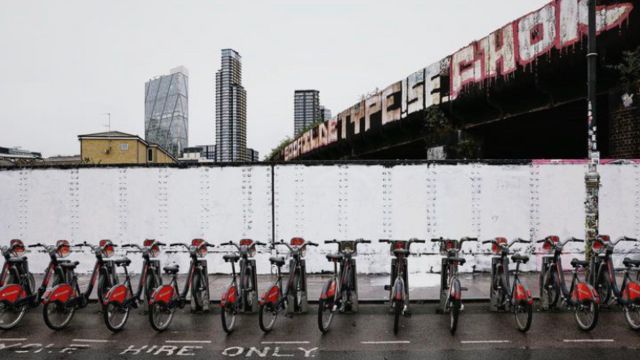

But the twelve bold, larger than life couplets, espousing each of the central tenets of the Communist faith, “prosperity, democracy, civilization, harmony, freedom, equality, justice, rule of law, patriotism, dedication, integrity, and friendliness,” would have struck at the heart of every exiled Chinese passerby, all too familiar with the motherland propaganda they have fled, whose urgings to live lives worthy of the Communist ideals and penalties for disobeying, are emblazoned on every wall, street corner and heart back home.


And it is these exiles, in particular from Tibet, Hong Kong and Xinjiang who took exception to Brick Lane’s new wallpaper and turned out in their droves to counteract the stunt.


Yique was quoted by Hong Kong’s “Dimsum Daily” as denying any political agenda. He admitted to being a Chinese patriot who was simply taking advantage of freedoms offered in the “individualistic and culturally colonialist” system of the West. Painting over the works of other artists was simply the “price of freedom,” he said. He later told the BBC that the sentiments in the 24 characters were not only goals for China, “but common goals for the world.”


A Uyghur exile, now resident in London, having fled persecution in China’s Northwest was horrified at the sense of déjà vu he felt when he saw photos online of the embellished “artwork.” He travelled down to Brick Lane to see it for himself. “It’s hard to put into words the fear and the memories this antic has rekindled in me. The pressure of living under this kind of oppression doesn’t just disappear overnight; the scars are deep and take years to heal. But in an instant on seeing this wall, it’s all come surging back as if it was yesterday,” said Ilham, who has been in the U.K. for ten years.
Simply catching sight of the bold red artwork was enough to transport him back to Xinjiang and the oppression he lived under for most of his life. “But seeing it in England, my country of refuge, has been terrifying. The feelings are illogical and probably groundless,” he said. “But looking at that wall I felt the imminence and closeness of the Chinese state, right here in London.”
A second Uyghur, Amine, who arrived with her family several years ago, says she has been watching the “creeping encroachment” of the Chinese state not only in the U.K., but throughout the world. “It is hard to find products that are not made in China these days and Chinese-owned surveillance cameras are everywhere,” she said. “The U.K. government seems asleep where China is concerned.”
She saw the Brick Lane mural as a metaphor for CCP actions in the Uyghur region where her language, culture and religion had been dismantled, painted over, and Chinese culture had been imposed instead. “Xi Jinping is in the process of Sinicizing my region and my people,” she said. “I wouldn’t be surprised if that is his objective for the world.” “When I look at this graffiti, this is what I see,” she said.
Following the antic, carried out seamlessly on Saturday August 5th, with meticulous precision by a gang of Yique’s contemporaries, armed with white paint, spray canisters and stencils, social media both inside and outside China erupted for and against. The students’ live-streaming of their artwork on the popular Chinese lifestyle app Xiaohongshu ensured their efforts reached a wide audience, but this backfired once their artwork was daubed with anti-Chinese slogans, and China soon pulled the plug on the publicity back in the motherland.


Ben Rogers, CEO of Hong Kong Watch, “utterly condemned the CCP thugs who defaced London’s Brick Lane with their regime’s vile, hate-filled propaganda.” He “wholeheartedly applauded” the “brave mainland Chinese” who later turned up to respond with their counter-graffiti.
Others, on the Chinese social media channel Weibo, justified the art students’ work by arguing that graffiti by virtue of its own definition should not only be anti-mainstream, but should also allow expressions that conformed to the establishment.
By noon on Sunday the wall was flooded with Tibetans, Hongkongers, mainland Chinese and activists overlaying anti-CCP slogans and comments over the panels. Some were praising and some on the other hand, were criticizing, insulting and strongly countering the original sentiments. “If they love the values so much, why aren’t they living in their own paradise?” asked one. Another pointed out the hypocrisy of values that “the Chinese government doesn’t even practice.”
Such was the tumultuous response that the local authority turned up on Monday morning and re-whitewashed the entire wall. The Weibo dialogue raged until it too was extinguished by government censors in China.


A local artist, Russell Shaw Higgs interviewed by the South China Morning Post, thought the dialogue was erased prematurely. “It had become a literal conversation on the walls, which is what it should be,” he said.
The wall is currently in a state of flux. Following the first re-whitening, anti-Chinese slogans started to reappear and were overlaid again by the local authorities afraid that the situation might get out of hand. Plans are afoot for more gatherings and more postings. Anti-CCP sentiment is running high. A genie is out of the box.


